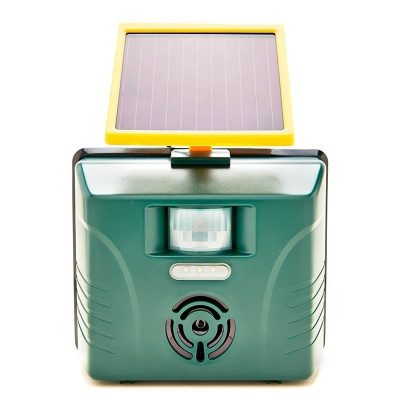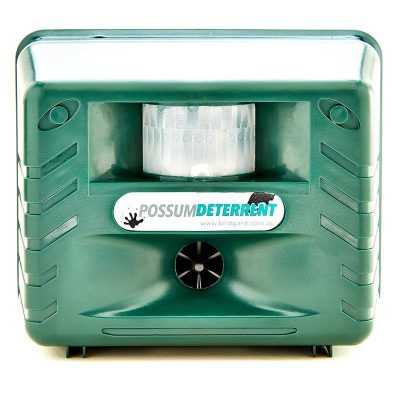Your cart is currently empty!

Possums, mosquitos and a growing instance of ulcers
Once again, the innocent-looking possum is the prime suspect: In the past five years, instances of a flesh-eating ulcer have tripled in the state of Victoria. Although it’s been around in the Mornington and Bellarine peninsulas since the 1990s, a rapid increase in Buruli aka Bairnsdale ulcers has also spread to Phillip Island and the outskirts of Melbourne itself, including the suburbs of Bentleigh, Hampton and Cheltenham. Although they have the initial appearance of a bug bite or itchy pimple, if left untreated, these ulcers can lead to permanent disfigurement and disability, covering up to 15 per cent of the skin’s surface and destroying nerves and blood vessels. While slow, the progression can be insidious as the spot grows larger over a period of time, turns into an ulcer and spreads rapidly from there.
By 2015, the instances of Buruli ulcers had grown to 106 up from 32 in 2010 — and keeps on climbing. “It’s moved…and it’s setting up shop in Melbourne,” Professor Paul Johnson of the infectious diseases unit at Melbourne’s Austin Hospital said in theage.com. “Every year it seems to be establishing new pockets”.
Researchers believe that possums transmit the infectious, ulcer-causing mycobacterium ulcerans (MU) bacteria through their faeces. Mosquitoes could also be spreading MU bacteria once they come into contact with infected possums, according to Johnson. So a simple bite could have devastating consequences.
This isn’t the first time possums have been fingered in the disease lineup. A Bird Gard customer in Tasmania fell victim to Tularemia (aka rabbit or deer fly fever) after being bitten/scratched by a possum. Among headaches, chills, fever and fatigue, Tularemia results in nasty ulcers and swollen lymph nodes. Fortunately, and also like Buruli ulcers, Tularemia can be treated with a course of antibiotics and easily cured if caught early enough. Unfortunately, however, both of these conditions can be difficult to diagnose if doctors don’t know to test for the specific bacteria. For Buruli ulcers, for instance, “There are a couple of million people live in these [affected] areas, and there’s still only a hundred cases,” Johnson told abc.net news.
While Johnson added that more research is needed regarding the methods and reasons behind transmission and spread of MU ulcer-causing bacteria, you can take steps to avoid unnecessary exposure. These include:
Wear gardening gloves, long-sleeved shirts and trousers when working outdoors.
Avoid insect bites by using suitable insect repellents.
Protect cuts or abrasions with sticking plasters.
Promptly wash and cover any scratches or cuts you receive while working outdoors.
See your doctor if you have a slow-healing skin lesion.
Remain aware if you live in or visit areas where the ulcer is more common, such as the Mornington and Bellarine peninsulas
Ask your doctor about the ulcer if you think you have one – there is a fast and accurate diagnostic test available
Source: Better Health Channel
While the risk of infection is low, even in places where the Buruli ulcer has a constant and growing presence in the community, it’s always better to be safe than sorry!
Sources & References:
- https://www.betterhealth.vic.gov.au/health/healthyliving/Buruli-ulcer
- http://www.abc.net.au/news/2016-08-05/flesh-eating-ulcer-spreading-to-melbournes-outskirts/7693106
- http://www.theage.com.au/victoria/flesheating-buruli-ulcer-cases-soar-as-disease-spreads-to-melbourne-20160804-gqksnw.html
-
 Solar Powered Possum Repeller$209.99 Including GST
Solar Powered Possum Repeller$209.99 Including GST -
 Possum Deterrent$189.75 Including GST
Possum Deterrent$189.75 Including GST
Comments
6 responses to “Possums, mosquitos and a growing instance of ulcers”
Hi there do you have anything to get rid of flying foxes, thanks
Hi Dev
We have a 4 speaker device we use to repel Flying Foxes. The device isnt on our website
Best to call to discuss 0754436344)
Regards Bird Gard
Hi i have problem with possums voming from a neighbouring property into my small backyard and eating my ornemental trees.
My backyard is 20m/3m
How many possum repellents will i needHi Nadia
The size of the area needing to be protected against possums is just one consideration when determining how many devices you would need, but at this stage I’ll say two devices.
Regards Bird Gard
Does this work inside the roof cavity?
Hi Jeanette
Yes we have two devices that we use to repel possums in roof spaces. Always best to give us a call to discuss
Regards Bird Gard

Leave a Reply